Japan experiences four distinct seasons, and each brings its own unique set of flowers to admire. Beyond the iconic cherry blossoms, there’s a rich variety of flowers in Japan to enjoy throughout the year. Spring welcomes the delicate cherry blossoms, or sakura, which paint the landscape in soft shades of pink and white, setting the scene for hanami, the traditional flower-viewing custom. As summer arrives, Japan bursts into a kaleidoscope of colours with a diverse range of flowers adorning its landscapes, from vibrant hydrangeas to elegant irises.
The transition to autumn brings a change in scenery, as Japan’s landscape is transformed by the vibrant hues of chrysanthemums and Japanese maples. This season is not only a feast for the eyes but also a time for cultural celebrations, such as the Chrysanthemum Festival, which honours these beloved blooms. Finally, as winter takes hold, the landscape is adorned with the subtle beauty of plum blossoms and the enduring strength of pines, reminding us of nature’s resilience even in the coldest months. Throughout the year, Japan’s flowers serve as gentle reminders to pause and appreciate the fleeting beauty of each season.
Find out all about the different flowers in Japan you can enjoy throughout the year. Click on the links to check out when and where to see Cherry Blossoms, Tulips, Azaleas, Roses, Poppies, Salvia, Hydrangea, Iris, Lavender, Indian Lotus, Sunflowers, Ume, and Moss Phlox.
Flowers in Japan
Cherry Blossoms
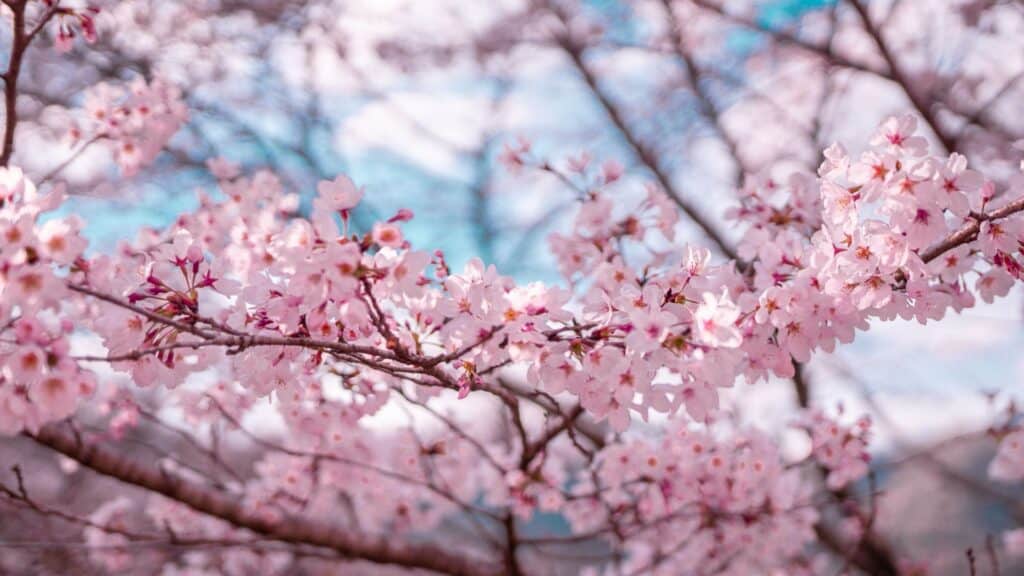
The cherry blossom, known in Japan as sakura, is a tree that blooms during the academic graduation and entrance period. It is often regarded as the quintessential spring flower of the country. Sakura are characterised by their attachment to relatively short branches. Depending on the species, sakura can display white, light pink, or dark pink hues, with petals that may be single or double. Some varieties of cherry trees produce red fruits around June.
Sakura holds a special place in Japanese culture, being the national flower and cherished by the Japanese people. The relationship between sakura and the Japanese people is said to be profound, dating back to ancient times as recorded in the Kojiki (Records of Ancient Matters). As far back as the Manyoshu, the cherry tree was considered sacred. Today, Japan boasts over 200 varieties of cherry trees, including wild types, but the Somei Yoshino stands out as the most common and well-known among the populace.
Tulips
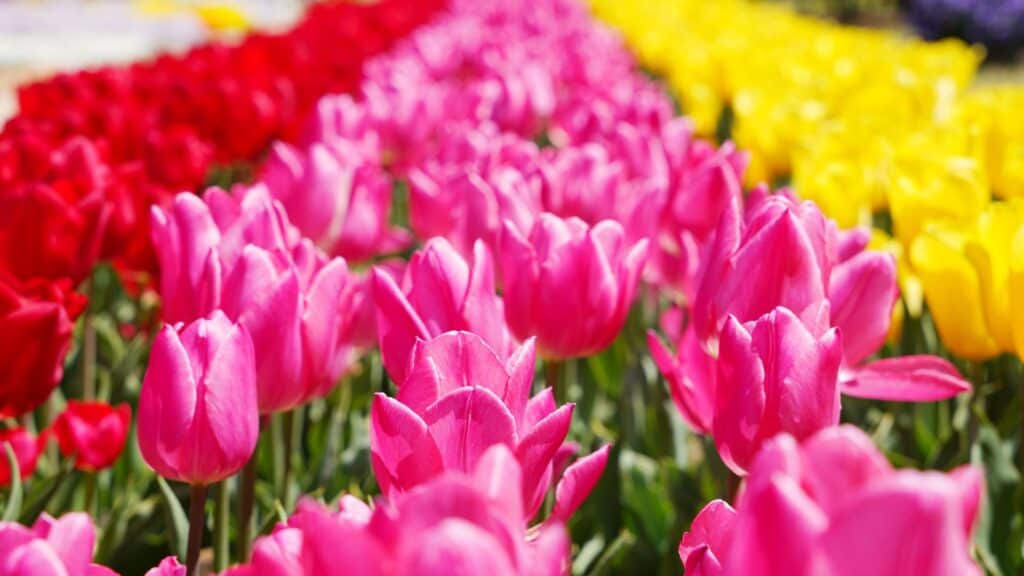
Tulips grace Japan with their full bloom from early April to mid-May. Bearing the floral emblem of “compassion,” they transport people into a world of fairy tales with their vivid colours. Among the myriad flowers, tulips stand out for their exceptional diversity, and the tulip fields, where hundreds of varieties bloom in unison, evoke the ambiance of Europe.
In the Kanto region, the spectacle can be enjoyed from the end of March to the end of April, while in the northern Kanto region, it extends until the beginning of May. An additional attraction is the opportunity to witness collaborations with various flowers, including nemophila, rape blossoms, and poppies. Families with children can delight in exploring the array of spring flowers together.
Moss Phlox
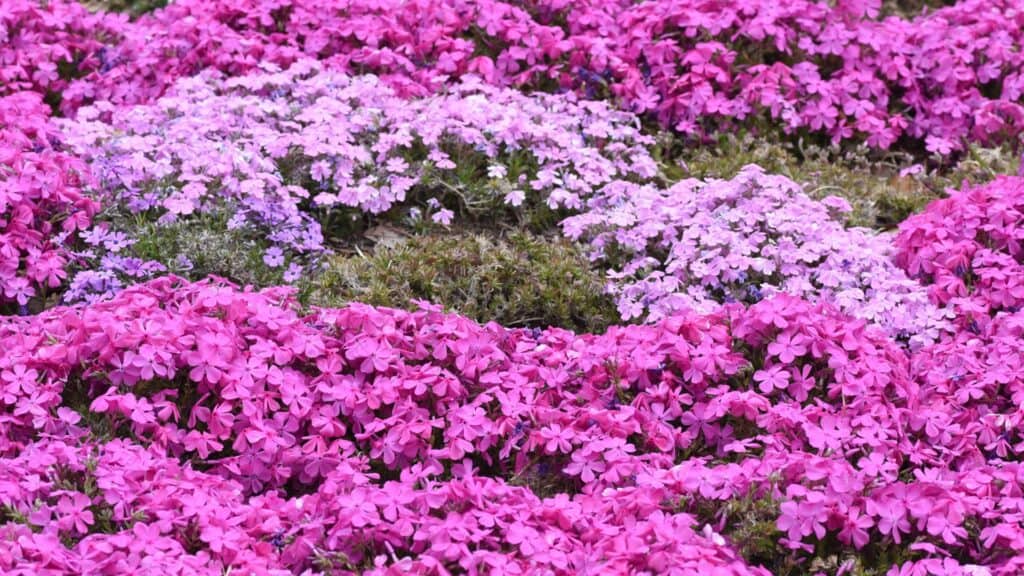
When the season of Moss phlox comes, you’ll find yourself surrounded by densely blooming small flowers. Moss phlox blankets the entire hillside like a patchwork quilt, obscuring the ground beneath when in full bloom. The optimal time to witness this spectacle is from mid-April to early May, so be sure not to miss the accompanying festival.
It’s a treat to indulge in a picnic amidst the fragrance of flowers in locations where you’re allowed to bring food and drink. Festivals selling local and specialty products, as well as illuminated spots at night, offer a variety of experiences to enjoy.
Mizubasho
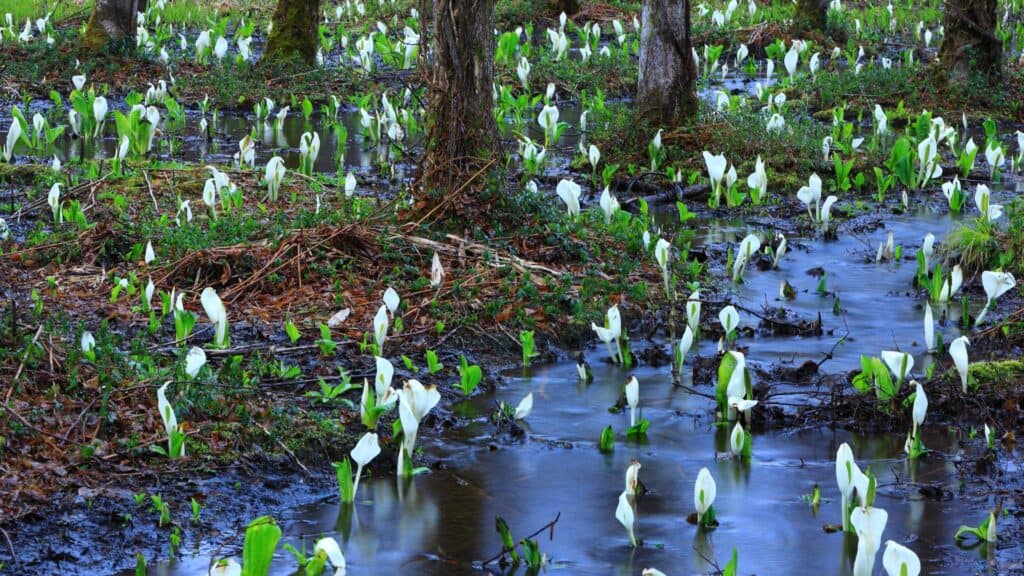
Mizubasho, a distinctive flower, heralds the onset of spring along the waterside. The prime viewing season spans from mid-April to mid-June, when the white Buddhist bracts adorn Onuma, creating a powerful bloom that immerses you in nature’s embrace. Near the water, rare animals can also be spotted. Visitors can not only enjoy leisurely walks around the lake but also partake in activities such as canoeing on its tranquil waters.
Wisteria
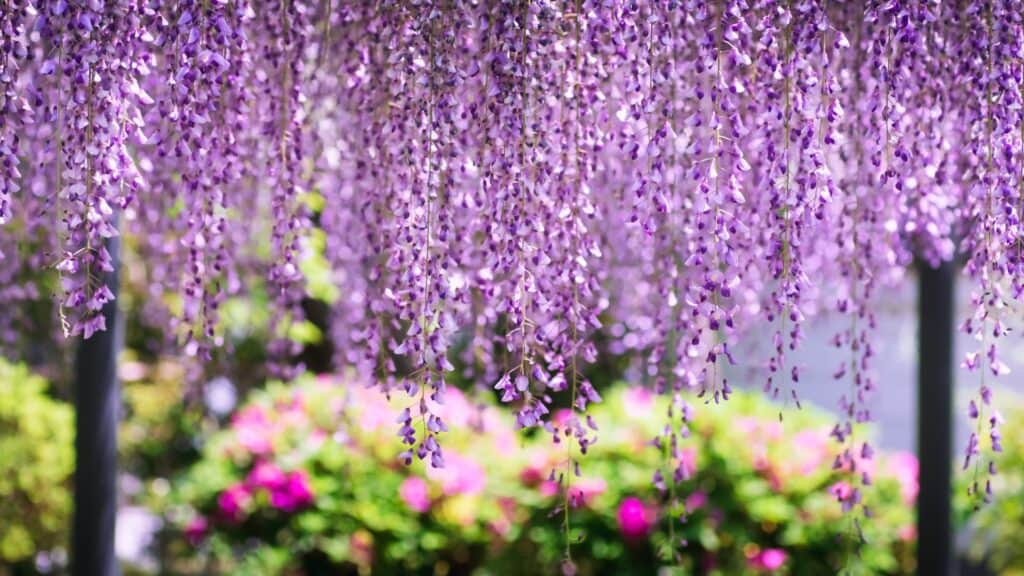
Wisteria has long been compared to a woman’s furisode (‘swinging sleeve’ kimono), known for its gentle colours that can soothe tired eyes. The tunnel of light purple and pink flowers, blooming amidst fresh greenery, is a masterpiece and a must-visit location for enthusiasts of flowers in Japan.
Renowned wisteria spots have garnered high praise not only within Japan but also globally, with some being selected as part of the “10 beautiful places in the real world.” Many of these locations offer illuminated displays at night, providing visitors with a fantastical view akin to stepping into another world. Furthermore, the wisteria festival, held in various places according to the optimal viewing times, adds to the allure. Don’t miss the opportunity to sample local delicacies such as wisteria-flavoured soft-serve ice cream.
Azalea
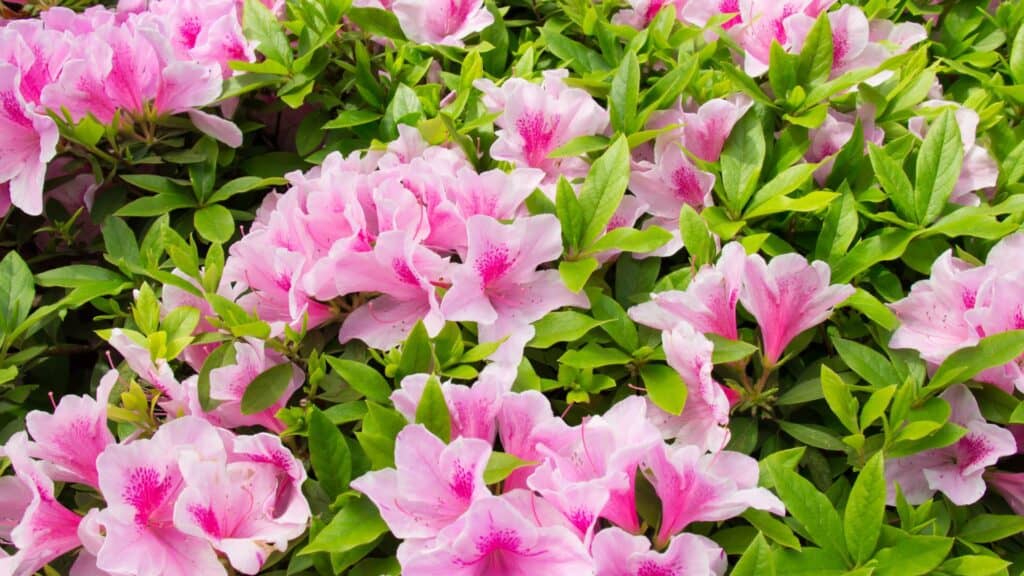
Azaleas have been cherished since ancient times, beloved for their enchanting scent that evokes a sense of nostalgia. When the garden is in full bloom, thousands of azaleas burst into flower, creating a sight that is truly unforgettable. One of the highlights is the presence of spots displaying not only pink but also red, purple, white, and various other colours, offering stunning photo opportunities.
During the peak bloom of azaleas, traditional performing arts associated with these flowers take place, accompanied by numerous stalls that enhance the cherry blossom viewing experience. Why not venture out to explore the diverse array of cherry blossoms, while also learning about the different types and colours of azaleas, including the best times to see them and how to access these beautiful displays?
Rose
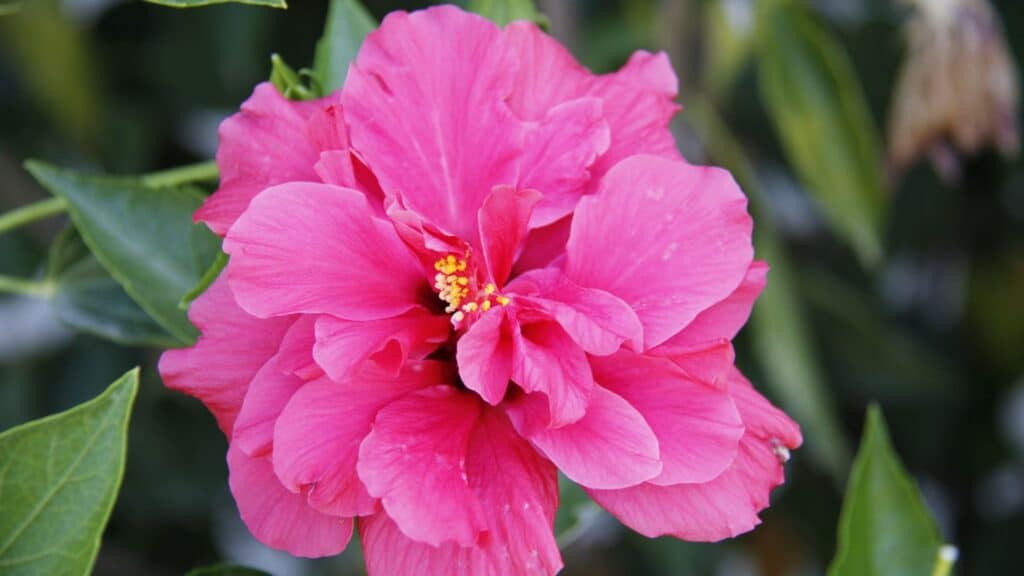
The rose is a flower that fills you with excitement simply by gazing upon its colour and shape. Furthermore, its captivating scent remains irresistible. Were you aware that there are magnificent rose gardens scattered throughout the country? These gardens, adorned with lush green leaves, exude the ambiance of Western gardens. Roses can be admired from a child’s perspective, making them an enjoyable experience for families.
Spring and autumn are the optimal seasons to witness the beauty of roses, making it an ideal time for outings. Additionally, there are places where you can partake in the experience of picking and purchasing roses, adding another layer of enjoyment to the visit.
Poppy

Rooted in Greek mythology, poppies symbolise the concept of “warmth.” These charming flowers, with their fluttering petals, bloom profusely across magnificent landscapes, creating a striking contrast against the azure sky.
Many locations offer opportunities for outdoor activities alongside leisurely strolls through poppy-filled fields. Additionally, various cherry blossom viewing events provide the chance to engage in poppy picking experiences, adding to the enjoyment of exploring flowers in Japan.
Salvia
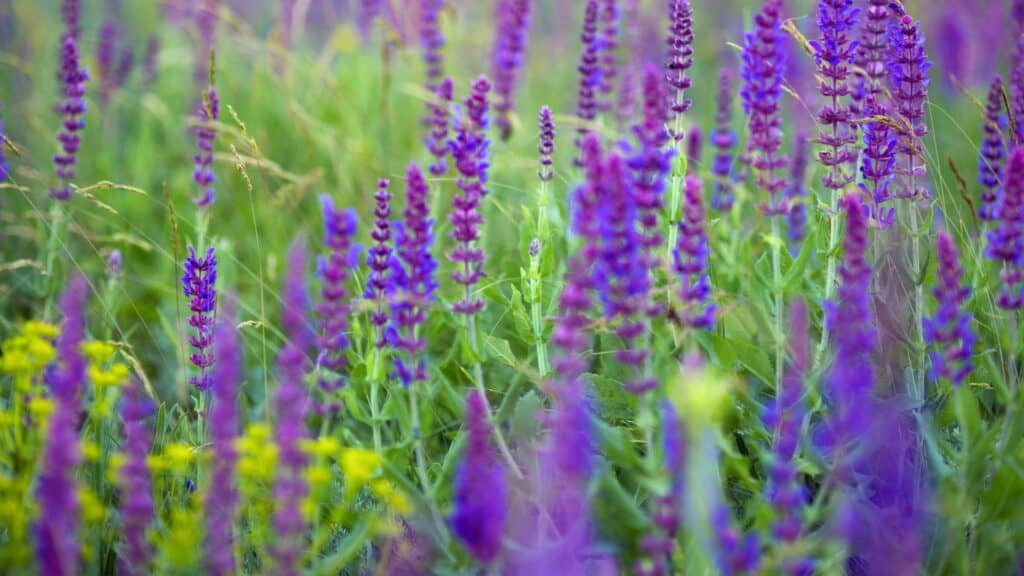
Salvia blooms in a variety of colours, with one of the most memorable sights being a vibrant red carpet of salvia flowers. In certain locations, the sights of Salvia are not as crowded, allowing for the enjoyment of magnificent views in lesser-known spots.
The optimal time to witness them is from August to early November, and they typically remain in bloom for an extended period. Depending on the season, visitors can also appreciate various collaborations with different flowers, enhancing the experience of exploring flowers in Japan.
Hydrangea

Hydrangea, a refreshing rainy season flower, exhibits a gradual change in colour after blooming begins. The factor influencing this colour change is the acidity of the soil; it is said that acidic soil produces blue blooms, while alkaline soil yields red blooms.
The flowering period spans from the beginning of June to the end of June, marked by various Hydrangea Festivals held to express gratitude to the gods for the blessings of nature during this time. Hydrangeas often grace temples, which have been popular since ancient times, creating a picturesque sight as they bloom on both sides of the stone steps beyond the gate. This scene evokes a sense of wonder, offering an emotional experience akin to cherry blossom viewing.
Iris
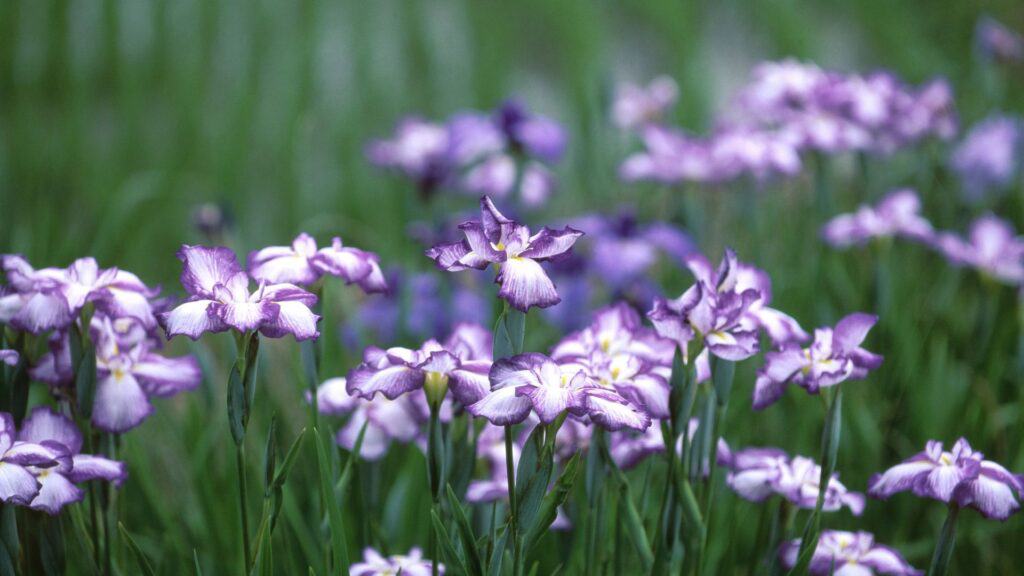
The irises bloom in full splendour from the rainy season through early summer, gracing the landscape with their elegant colours, including shades of white and purple. The optimal time to admire them is during the rainy season, making them a delightful sight even in the rain.
Among the varieties, the typical iris boasts an array of colours, with blooms ranging from purple to magenta. In the Kanto area, there exists a renowned location where 1.5 million iris stocks burst into bloom simultaneously, presenting an awe-inspiring spectacle. While people often prefer to stay indoors during the rainy season, it’s worthwhile to venture out to witness the irises, a unique feature of this time of year.
Lavender
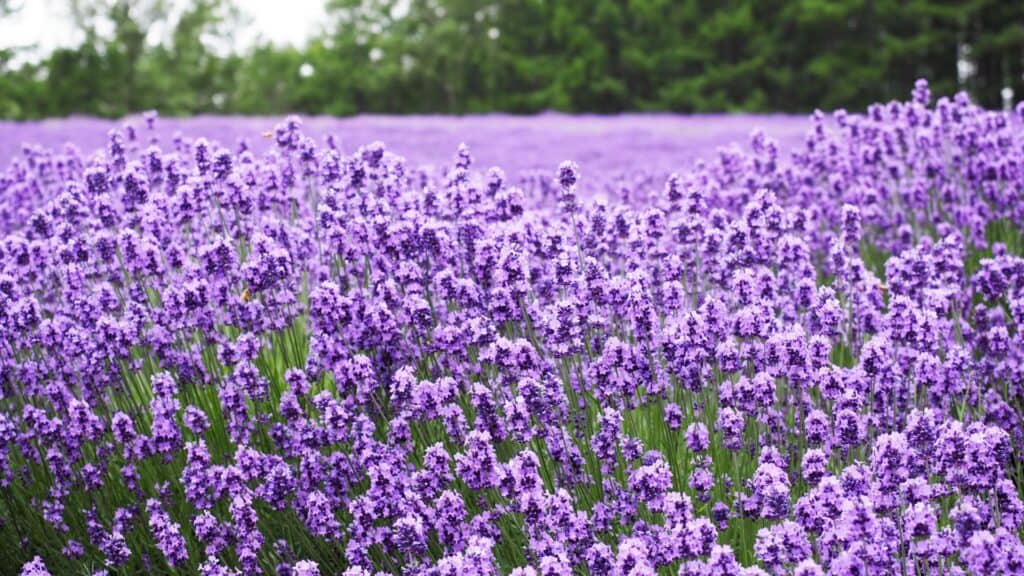
Lavender emits a refreshing scent and produces beautiful flowers. The purple carpet created by tightly packed lavender on one side is a masterpiece. It seems like a dream, as there are some places where you can experience picking lavender. Lavender is in full bloom in mid-July and during the hot summer months. Lavender fields are often situated at relatively high altitudes, where temperatures are relatively low, allowing for comfortable outdoor excursions.
We also recommend trying lavender ice cream, which is popular for its refreshing taste. Especially during the hot and humid summers, lavender ice cream is a must-try.
Indian lotus

The Indian lotus is a plant that takes root in the ground and grows stems from it, producing flowers that bloom on the surface of the water. It is an aquatic plant that emerges from the mud. The Indian lotus produces such beautiful flowers that in China and Japan, it is said to “emerge from the mud unstained”.
The harmony between the elegant architecture of old temples and the lotus pond in the bright garden is truly remarkable. There are also famous locations where the lotus pond is illuminated at night. The fusion of historic atmosphere and contemporary art is simply breathtaking.
Sunflower
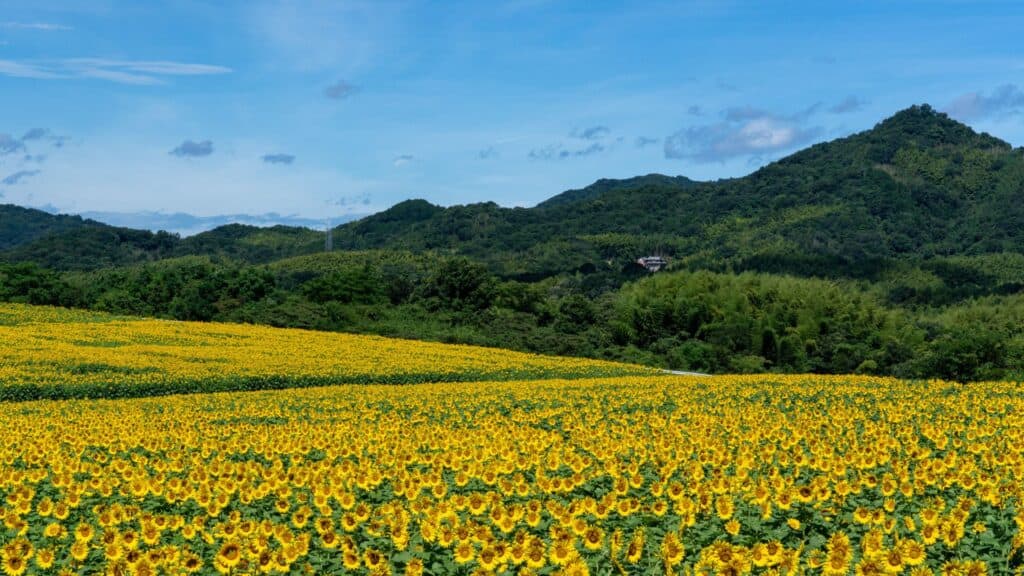
The sight of a bright blue sky alongside vibrant yellow sunflowers is a summer tradition. Standing amidst a sunflower field taller than yourself, you can’t help but feel transported back to your childhood. Sunflowers have the charming habit of turning towards the sun. While they typically bloom from mid-August to early September, there are some renowned locations where they reach full bloom as late as October.
Across the country, there are numerous spots where you can admire sunflowers as if you were abroad. Not only can you immerse yourself in the summer atmosphere, but you can also capture stunning photos of the sunflowers. Why not venture into a sunflower field, akin to a maze, and experience the joy firsthand?
Ume
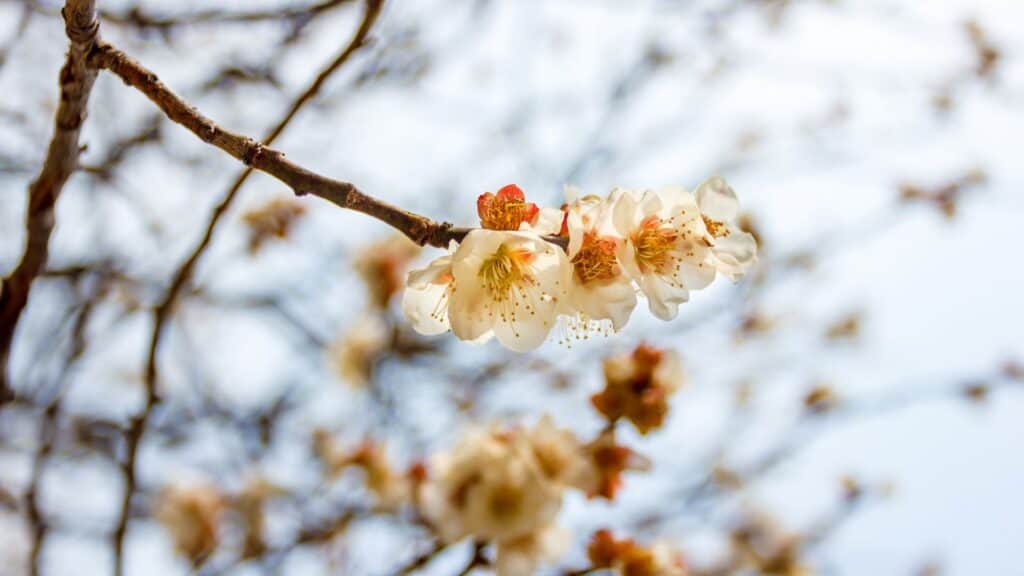
The ume is a flowering tree native to China and is said to have reached Japan via Korea. Ume is divided into “hana-ume,” which produces highly ornamental flowers, and “jitsu-ume,” which yields high-quality fruits suitable for medicinal and food processing purposes.
In addition to the flowers, the main aspects to admire about the flowering plum trees are their fragrance, trunk shape, and branching. Since the tree boasts a long lifespan, it is a joy to witness its growth and development over the years.
The Ume flower, a flowering tree heralding the arrival of spring, derives its name from the sight of plum blossoms blooming with dignity in the cold winds. The peak season for Ume flowers is in February, amidst the lingering chill. February also marks the season of snowfall in some regions. This symbolism perfectly encapsulates the Ume, which produces vibrant flowers even in such cold weather.
Have you considered the captivating allure of flowers in Japan, which welcomes travellers with its ever-changing floral landscape throughout the year? Regardless of the season you choose to visit, Japan offers a kaleidoscope of floral wonders to explore and enjoy.
In spring, the iconic cherry blossoms paint the landscape with delicate hues of pink and white, while summer brings vibrant displays of hydrangeas and sunflowers. Autumn delights with fiery displays of maple leaves alongside blooming chrysanthemums, and even in winter, plum blossoms brave the cold to offer a glimpse of early spring. Whether you’re exploring urban parks, rural landscapes, or temple gardens, the beauty of Japanese flowers awaits travellers at every turn, promising a memorable experience regardless of the season of your visit.
Find out all about the different flowers in Japan you can enjoy throughout the year. Click the links to check out when and where to see Cherry Blossoms, Tulips, Azaleas, Roses, Poppies, Salvia, Hydrangea, Iris, Lavender, Indian Lotus, Sunflowers, Ume, and Moss Phlox.

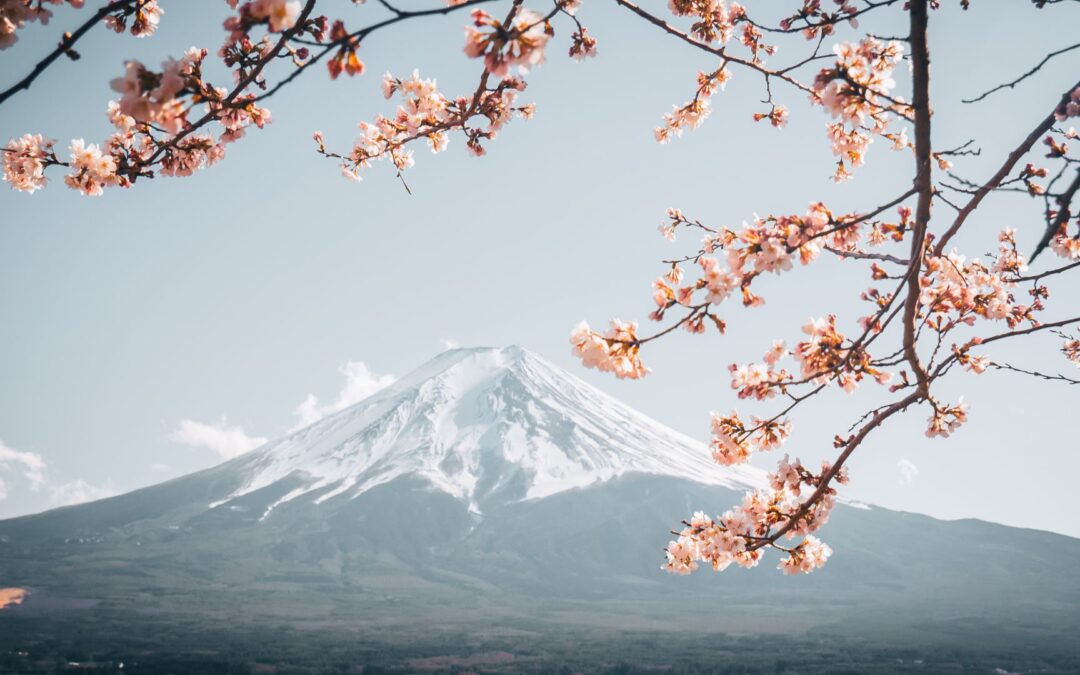
Recent Comments